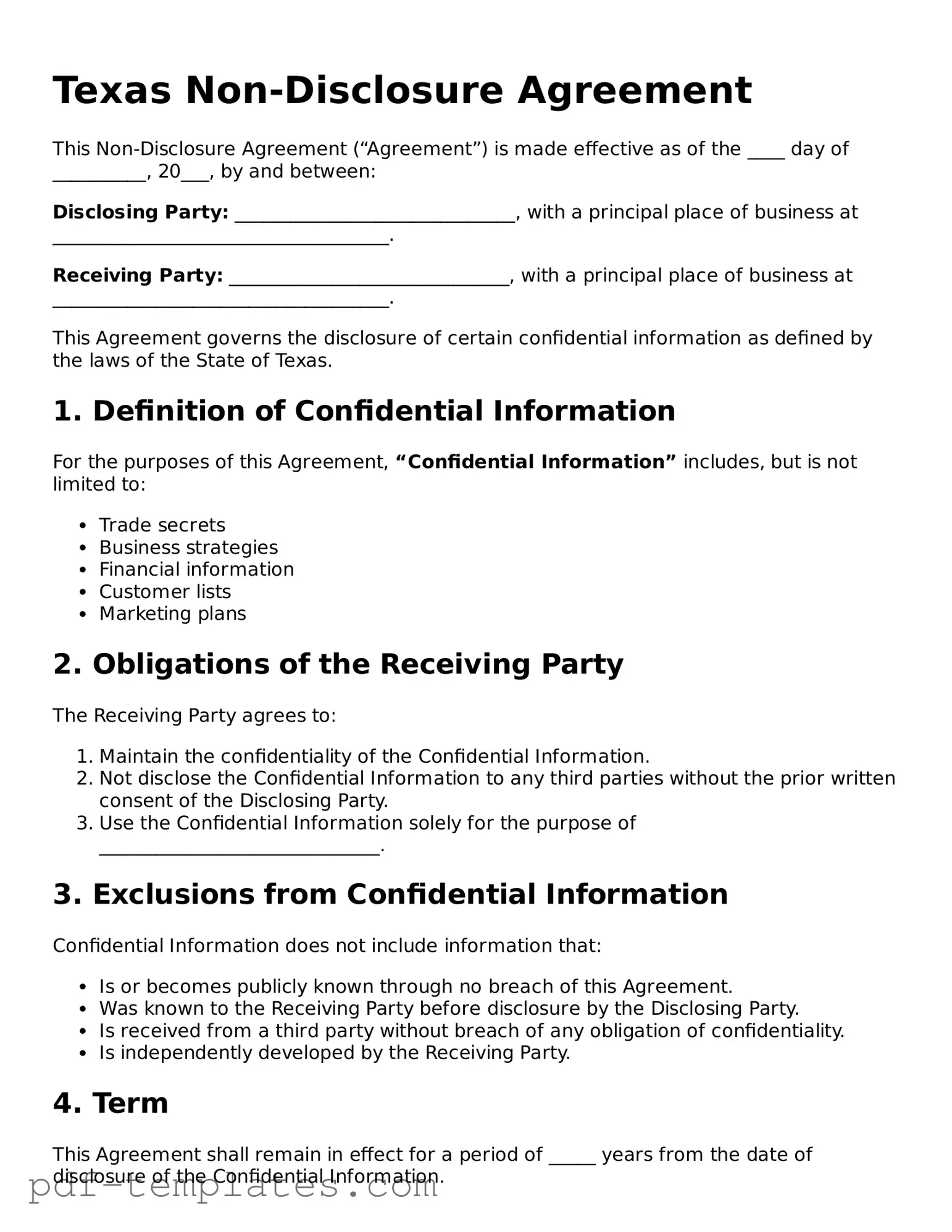The Texas Non-disclosure Agreement (NDA) shares similarities with the Confidentiality Agreement, which serves a similar purpose of protecting sensitive information. Like an NDA, a Confidentiality Agreement outlines the obligations of the parties involved to keep certain information private. Both documents specify what constitutes confidential information and detail the consequences of unauthorized disclosure. They are often used in business settings, particularly during negotiations or collaborations, to ensure that proprietary information remains secure and is not disclosed to third parties.
Another document akin to the Texas NDA is the Non-compete Agreement. While the primary focus of a Non-compete Agreement is to prevent individuals from engaging in competitive activities after leaving a company, it often includes clauses that address the handling of confidential information. Both agreements aim to protect business interests, but the Non-compete Agreement emphasizes restrictions on future employment or business operations, whereas the NDA focuses on maintaining confidentiality during and after a business relationship.
The Non-solicitation Agreement also bears resemblance to the Texas NDA. This document restricts individuals from soliciting clients, customers, or employees of a business after leaving. Like the NDA, it seeks to protect the business's interests and proprietary information. In many cases, both agreements are used together to ensure that sensitive information remains confidential while also preventing former employees from taking valuable relationships with them when they depart.
A similar document is the Proprietary Information Agreement (PIA). This agreement specifically addresses the protection of proprietary information, which is often a subset of confidential information. The PIA outlines what proprietary information is, how it should be handled, and the obligations of the parties involved. Both the PIA and the Texas NDA serve to safeguard sensitive information, but the PIA tends to focus more on proprietary aspects, such as trade secrets or unique business processes.
Understanding the various legal documents that protect business interests, such as Non-Compete Agreements and Non-Disclosure Agreements, is essential. For those seeking additional information or templates, visiting formcalifornia.com can provide valuable resources to ensure compliance and clarity in these agreements.
Lastly, the Mutual Non-disclosure Agreement (MNDA) is another document that aligns closely with the Texas NDA. Unlike a one-sided NDA, the MNDA involves two parties agreeing to protect each other's confidential information. This agreement is particularly useful in situations where both parties are sharing sensitive information, such as during joint ventures or partnerships. Both the MNDA and the Texas NDA establish clear guidelines on confidentiality and the handling of shared information, ensuring that both parties' interests are protected equally.
